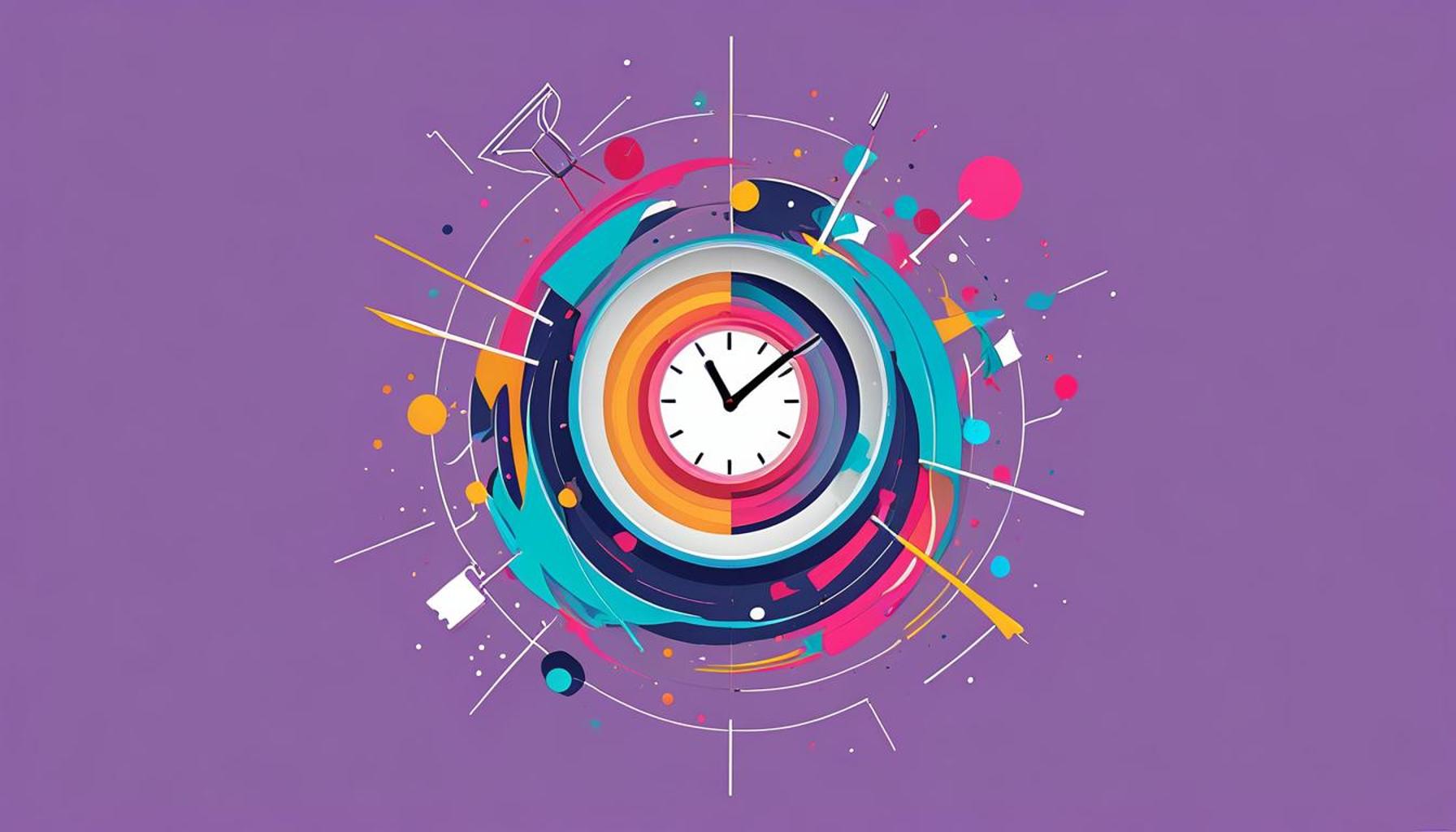Minimalist Organization Strategies to Maximize Daily Productivity

Unlocking the Power of Minimalism for Enhanced Productivity
In an era where notifications ping incessantly and workloads seem to multiply overnight, transitioning to minimalist organization strategies can transform not just your workspace, but your overall productivity. The minimalist approach champions the principle of “less is more,” allowing individuals to strip away the unnecessary and focus on what truly matters. As a result, adopting these techniques can lead to streamlined routines that enhance focus and effectiveness like never before.
Picture your workspace—minimal, uncluttered, and intentional. The impact is profound. Here are a few key benefits associated with embracing a minimalist mindset:
- Reduced Clutter: Clutter, both physical and mental, can be a significant barrier to concentration. A study published by Princeton University’s Neuroscience Institute reveals that clutter can overwhelm the brain, leading to decreased performance and increased stress levels. By keeping your environments tidy, you create a space where clarity reigns.
- Time Efficiency: With fewer distractions, simplified systems emerge that can drastically cut down on time spent on decision-making. For instance, the practice of the Two-Minute Rule—completing any task that can take less than two minutes immediately—can streamline your workflow and prevent tasks from piling up.
- Stress Reduction: A minimalist environment not only looks good, but it also fosters tranquility. Research shows that environments designed with fewer stimuli can lead to reduced cortisol levels, the hormone associated with stress. This promotes a sense of control and calm, which is essential for navigating busy workdays.
Introducing these minimalist strategies into your daily life can drastically enhance productivity. Consider how you can:
- Prioritize Essential Tasks: Utilizing techniques like the Eisenhower Matrix allows for the classification of tasks by urgency and importance, filling your day with focused, meaningful activities.
- Employ Digital Tools: Apps like Trello and Notion can simplify project management and organization by providing intuitive, visual platforms that help track progress and deadlines, thus reducing the clutter of multiple to-do lists.
- Create a Distraction-Free Workspace: Whether it’s noise-canceling headphones or a clean desk policy, tailoring your environment to enhance focus can be a turning point. Strategies such as the Pomodoro Technique, which encourages short bursts of work interspersed with breaks, can fit seamlessly within this framework.
As we continue to explore the transformative effects of minimalist organization strategies, you’ll uncover not just tips, but lifestyle changes that resonate on multiple levels. The potential to reclaim your time and attention in a chaotic world is substantial. Don’t just see minimalism as a trend; view it as an invitation to enrich your daily routine, fostering both productivity and serenity.
DIVE DEEPER: Click here to learn more

Strategies to Simplify Your Daily Routine
Adopting minimalist organization strategies requires a deep dive into your existing habits and recognizing opportunities for significant improvement. It’s about reassessing how you allocate both physical and mental energy throughout your day. Below are several actionable strategies that align with minimalist principles, enabling you to take deliberate control of your responsibilities while enhancing daily productivity.
Establishing a Daily Focus
One of the foundational elements of minimalism is the idea of focus. Transitioning to a minimalist organization strategy starts with defining your most crucial tasks. Instead of overwhelming yourself with an extensive to-do list, identify three to five high-impact activities to conquer each day. This approach allows for a laser-like focus on what genuinely drives value. Tools like the ABC prioritization method, where tasks are categorized into A (most important), B (important but not urgent), and C (nice to do), can streamline this process.
Clutter-Free Digital Spaces
In the age of digital noise, virtual clutter can be just as distracting as physical mess. Implementing folder hierarchies, unsubscribing from unnecessary emails, and managing application notifications are essential for a clean digital workspace. Consider utilizing productivity tools designed for minimalists, such as Todoist or Asana, which can help consolidate tasks while offering a sleek interface that encourages simplicity.
Time Blocking Technique
Another powerful minimalist strategy is the time blocking technique. This involves dedicating specific blocks of time to particular tasks or types of work throughout the day. By scheduling uninterrupted time slots, you can minimize distractions and enhance focus. This method not only clarifies what you should be working on but also helps in maintaining a steady workflow, preventing burnout from multitasking.
Minimalist Workspace Design
Your workspace can significantly influence your productivity levels. An intentional approach to your environment promotes mindfulness and minimizes distractions. Here are a few ways to create an effective minimalist workspace:
- Choose Multi-Functional Furniture: Invest in furniture that serves more than one purpose, such as a desk with ample storage or an ergonomic chair that promotes good posture.
- Utilize Natural Light: Position your workspace near a window to benefit from natural light, which can enhance mood and reduce fatigue.
- Incorporate Plants: Adding a few low-maintenance plants can improve air quality and offer a refreshing touch to your workspace, further reducing stress.
By employing these minimalist strategies, you’re not only decluttering but also actively designing a daily routine that champions productivity. The goal is to empower yourself to work smarter, not harder, thereby fostering a healthier work-life balance. As we delve deeper into this journey, you’ll uncover even more tailored strategies to enhance your daily productivity through the power of minimalism.
Embracing Minimalism in Daily Routines
In today’s fast-paced world, minimalism has emerged as a powerful strategy for enhancing daily productivity. By simplifying our routines and decluttering our environments, we can create the mental space necessary to focus on what truly matters. Implementing minimalist organization strategies not only helps in managing physical spaces but also fosters clarity in our cognitive processes.
Strategic Time Management
One essential aspect of minimalist organization is effective time management. Adopting techniques such as the Pomodoro Technique—where tasks are divided into short, focused intervals—can significantly boost efficiency. By limiting distractions and concentrating on single tasks, individuals can enhance their productivity levels and better manage their time.
Decluttering Your Workspace
An organized workspace can have a profound impact on productivity. A minimalist approach encourages removing non-essential items from your desk, which can reduce stress and heighten focus. By keeping only the tools and materials that facilitate your work, you create an environment that fosters creativity and efficiency. Remember, a clutter-free workspace contributes to a clutter-free mind.
| Category 1 | Category 2 |
|---|---|
| Workspace Organization | Simplifies finding tools and documents |
| Focus Enhancement | Reduces distractions and increases task engagement |
Prioritizing Tasks
Another key element of minimalist strategies is the prioritization of tasks. The Eisenhower Matrix can be a useful tool in categorizing tasks based on urgency and importance. By distinguishing high-priority tasks from less important ones, you can allocate your energy and resources more effectively, ensuring that core responsibilities are addressed while lower priority items are delegated or postponed.
Maintaining a Balanced Digital Life
In an increasingly digital world, clutter can also stem from our online lives. Adopting minimalist digital strategies—such as regularly unsubscribing from unnecessary emails, limiting app usage, and organizing digital files into easily navigable folders—can help reduce the overwhelm that often accompanies technology. This proactivity in maintaining a clean digital environment contributes to overall productivity, making it easier to concentrate on vital tasks.
DISCOVER MORE: Click here to enhance your productivity
Streamlining Your Decision-Making Process
In a world filled with choices, the ability to make decisions efficiently is critical for maintaining daily productivity. Employing minimalist strategies can help simplify your decision-making process, enabling you to conserve mental energy for more impactful tasks. Here are several tactics designed to reduce decision fatigue and streamline your choices.
The Five-Second Rule
The Five-Second Rule is a simple yet powerful technique proposed by motivational speaker Mel Robbins. The premise is straightforward: when you feel the urge to act on a goal or make a decision, count down from five to one and then take action. This method minimizes overthinking and encourages immediate decision-making. By implementing this technique, you free yourself from analysis paralysis, focusing instead on the execution of your goals rather than getting bogged down in detail. It is particularly useful for simple choices like what to eat for lunch or when to start a task, allowing you to move decisively throughout your day.
Creating a Decision-Making Framework
Developing a decision-making framework can further eliminate complexities within your daily routine. This framework can be as simple as writing down criteria for making specific types of decisions. For example, if you often struggle with which project to prioritize, you might develop a checklist of factors—like urgency, impact, and required resources—that must be met before a task becomes a priority. Using this structured approach not only provides clarity but also speeds up the decision-making process, allowing you to concentrate on executing tasks rather than wading through indecision.
Batch Processing Decisions
Instead of addressing decisions as they arise throughout the day, consider implementing batch processing. This technique involves grouping similar decisions together and tackling them at once. For instance, allocate a specific time each day to respond to emails or handle administrative tasks. By setting aside these dedicated time blocks, you can minimize distractions and interruptions, leading to more focused and productive working hours. Research has shown that this method reduces cognitive load, enabling you to approach each decision with a refreshed mindset.
Evaluate and Eliminate Low-Value Tasks
A core tenet of minimalism is eliminating unnecessary burdens that weigh you down. Identifying and reducing low-value tasks—those activities that consume time but offer little return on investment—can dramatically enhance your productivity. Conduct a “time audit” to analyze how you currently allocate your time. Once you’ve pinpointed these tasks, strive to either delegate them, automate them, or simply eliminate them from your routine. Applications and tools like IFTTT (If This Then That) can automate recurring tasks, ensuring that you focus on higher-value activities instead.
Using the Two-Minute Rule
Another effective method to enhance your daily productivity is the Two-Minute Rule, popularized by David Allen in his book “Getting Things Done”. If a task takes two minutes or less to complete, do it immediately. This strategy helps in preventing small tasks from piling up and clogging your to-do list. By addressing these minor tasks right away, you create a more streamlined workflow, freeing up mental space for larger projects that require deeper focus.
Embracing these minimalist decision-making strategies will undoubtedly improve how you manage your daily responsibilities. By systematically simplifying your choices and eliminating distractions, you can channel your energies into high-impact activities, ultimately maximizing your productivity and enhancing overall satisfaction in your work and personal life.
DISCOVER MORE: Click here to learn how color organization can boost your efficiency
Unlocking Productivity through Minimalist Organization
In today’s fast-paced world, adopting minimalist organization strategies is essential for optimizing daily productivity. As we juggle countless tasks, it becomes crucial to streamline our decision-making processes. A cluttered mind can lead to indecision and mental fatigue, which often impede progress. Simple techniques such as the Five-Second Rule, which encourages individuals to act within five seconds of having an idea, or the Two-Minute Rule, which suggests that if a task can be completed in two minutes or less, you should do it immediately, empower you to take prompt actions. These approaches not only cultivate a decisive mindset but also reduce procrastination, allowing you to tackle your day with confidence.
Creating a structured decision-making framework is another effective way to enhance productivity. This involves defining clear criteria for decision-making, which can save time and energy when faced with choices. Moreover, incorporating batch processing—the practice of grouping similar tasks together—can lead to remarkable efficiency. For instance, designating a specific time each week to respond to emails can prevent constant interruptions and enable deeper focus on critical projects.
In addition to these actionable strategies, evaluating and eliminating low-value tasks is vital. Reflecting on how you spend your time can reveal activities that do not align with your goals. For instance, if you’re spending hours on social media without meaningful engagement, it may be time to reassess that time investment. By creating more room in your schedule for what truly matters, you can focus on high-impact activities that yield substantial results.
The real beauty of minimalism lies not only in decluttering physical spaces but also in prioritizing mental clarity. This holistic approach to organization inspires you to concentrate on the tasks and projects that contribute to your long-term aspirations. As you explore these strategies, remember that productivity is not merely about doing more; it’s about doing what counts. In an era where distractions are constant—whether from smartphones, emails, or social media—simplification can be your greatest ally in reclaiming your time and focus.
Implementing minimalist organization strategies not only enhances your productivity but also leads to a more fulfilled and satisfying life. By embracing this journey of simplification, you will discover how less can indeed be more in your daily routines. Cultivating a mindset that prioritizes essential actions over unnecessary clutter will empower you to live proactively rather than reactively, ultimately transforming how you approach your goals and commitments.


